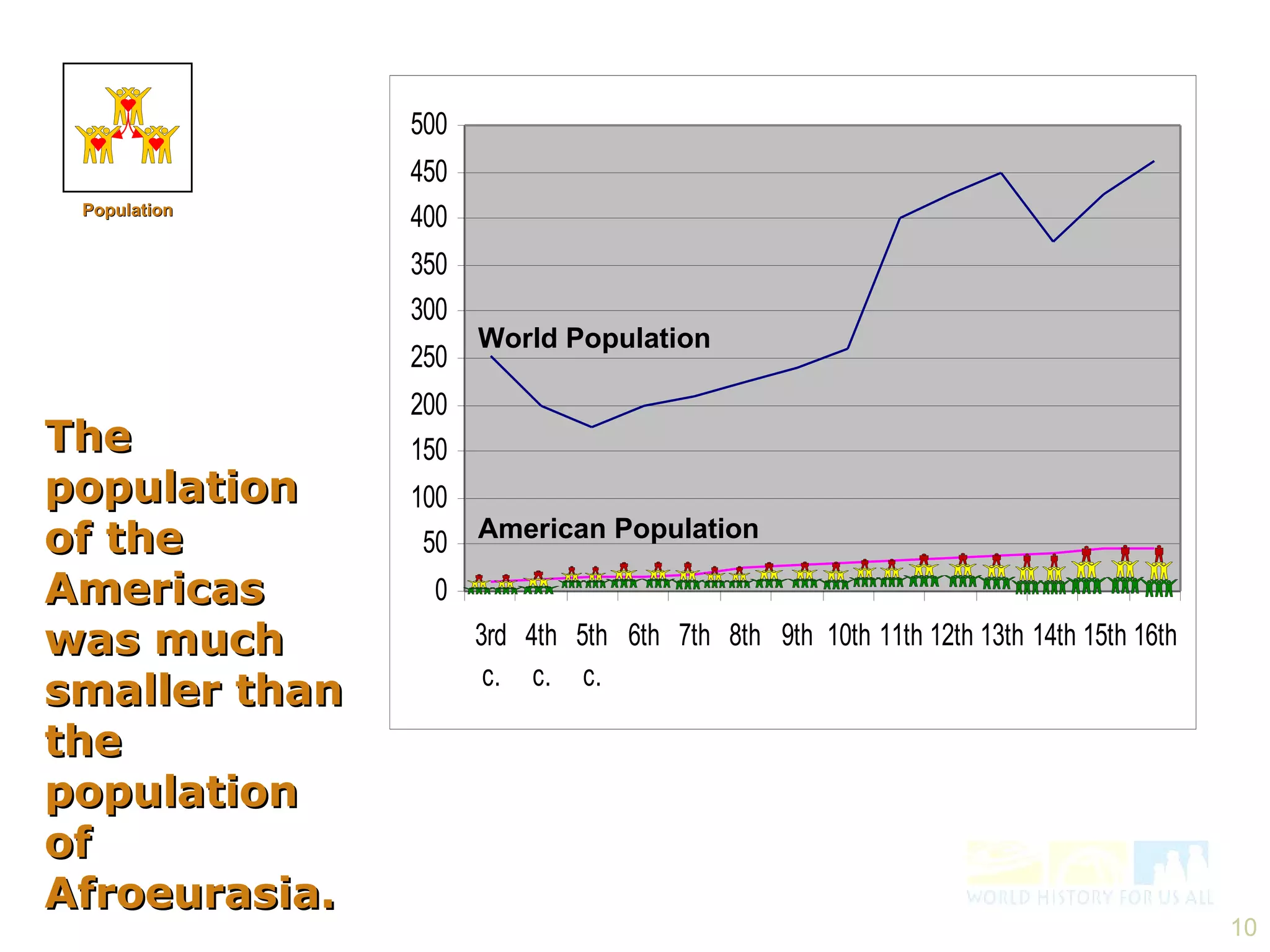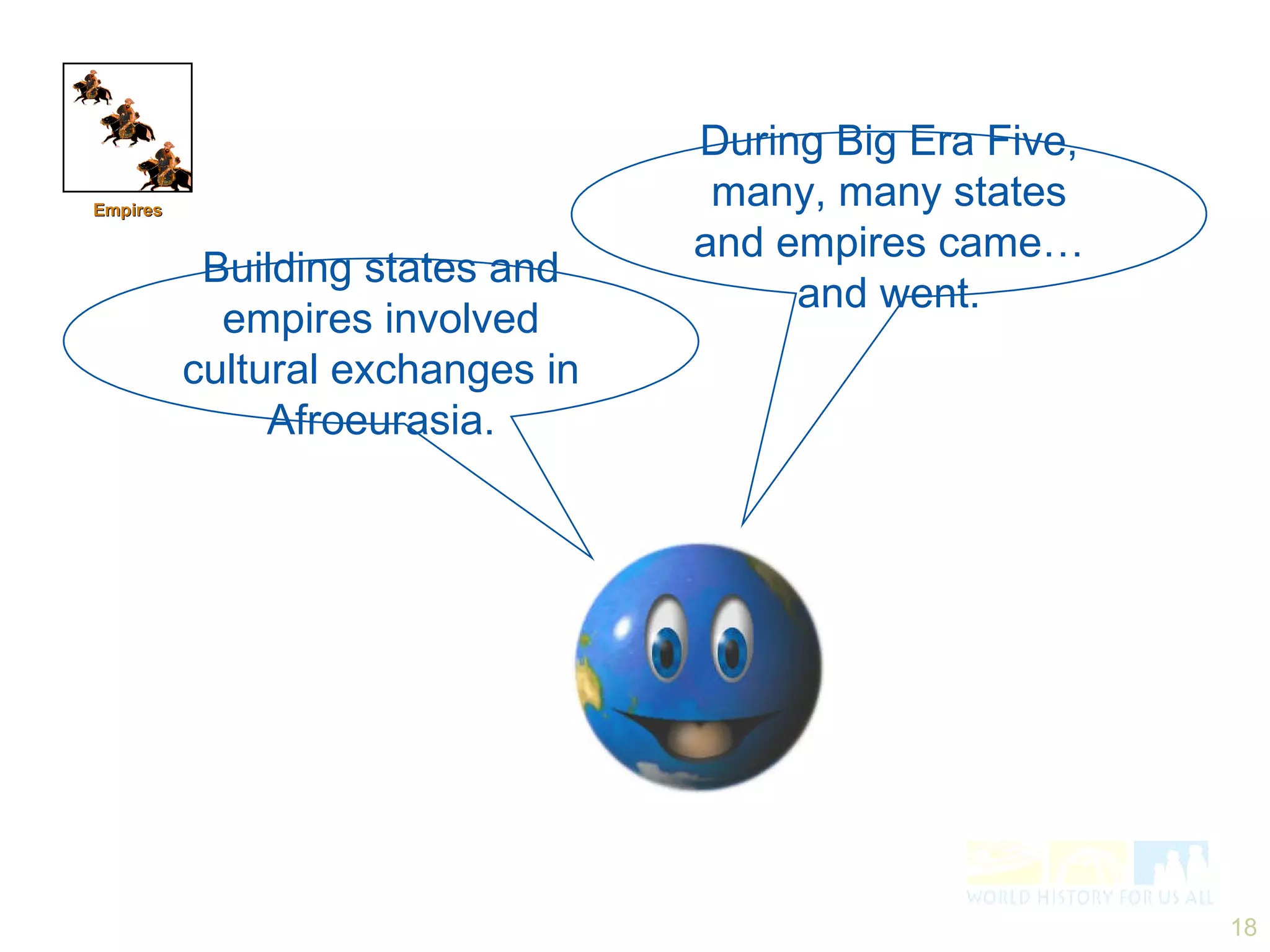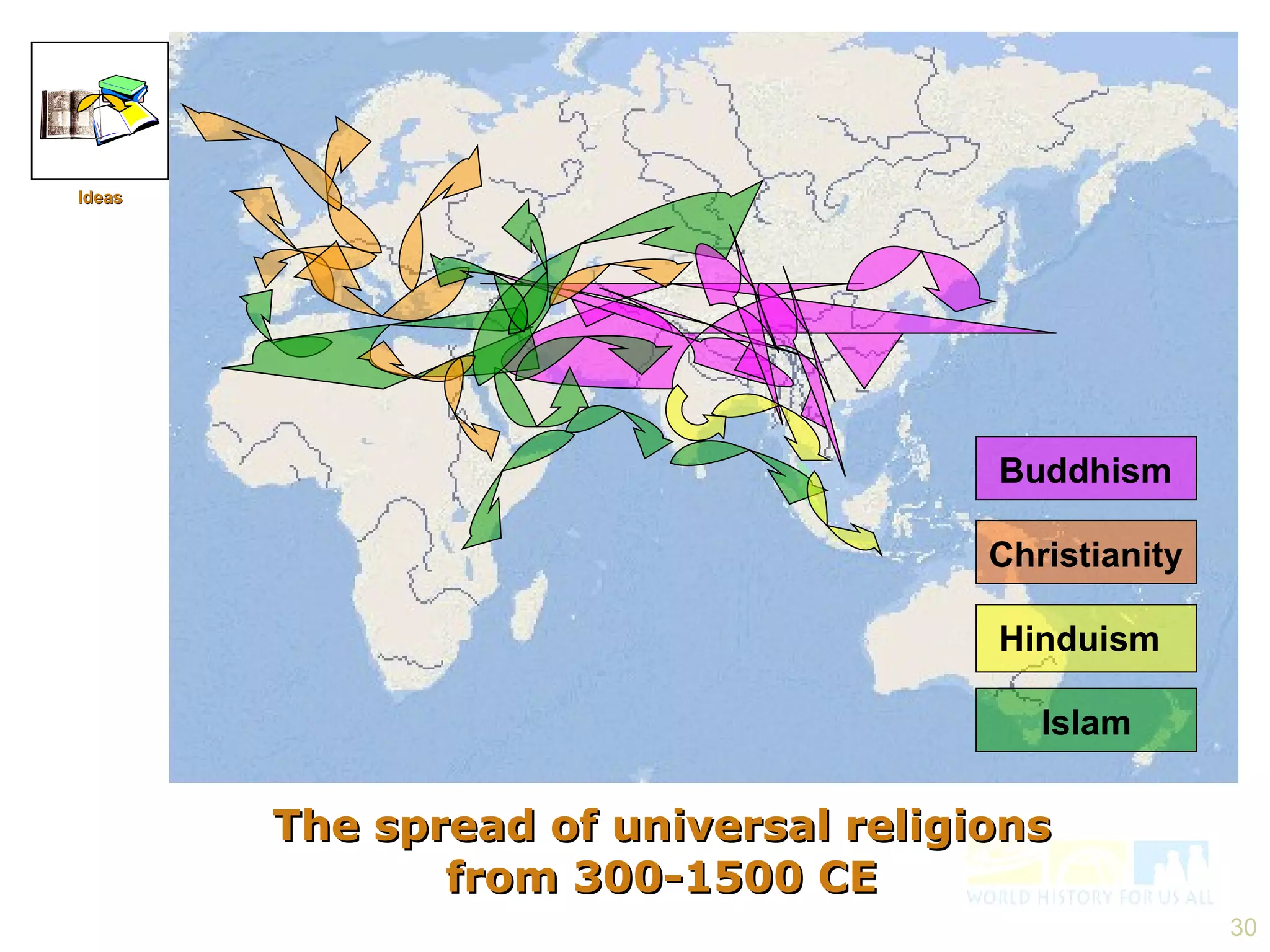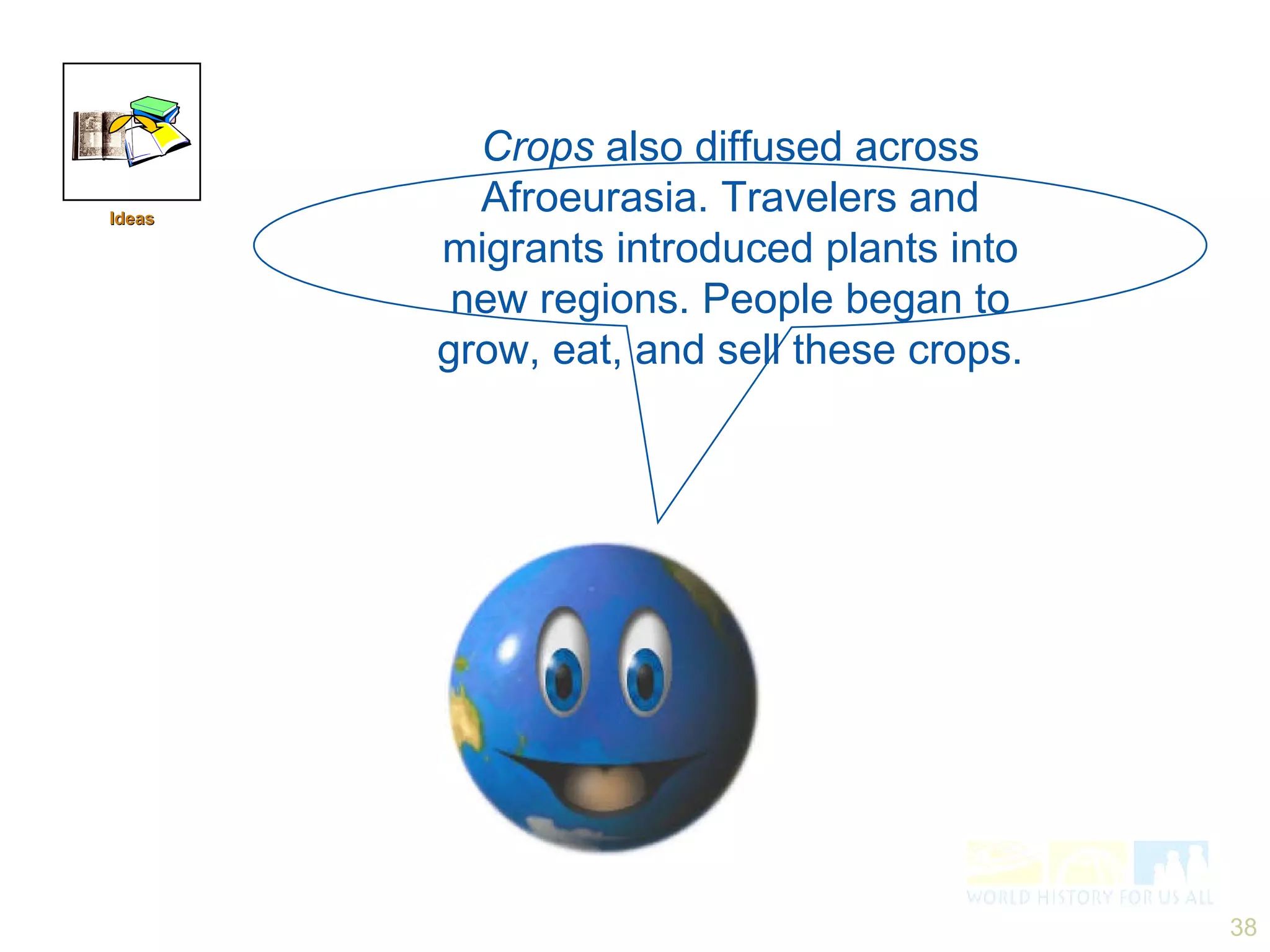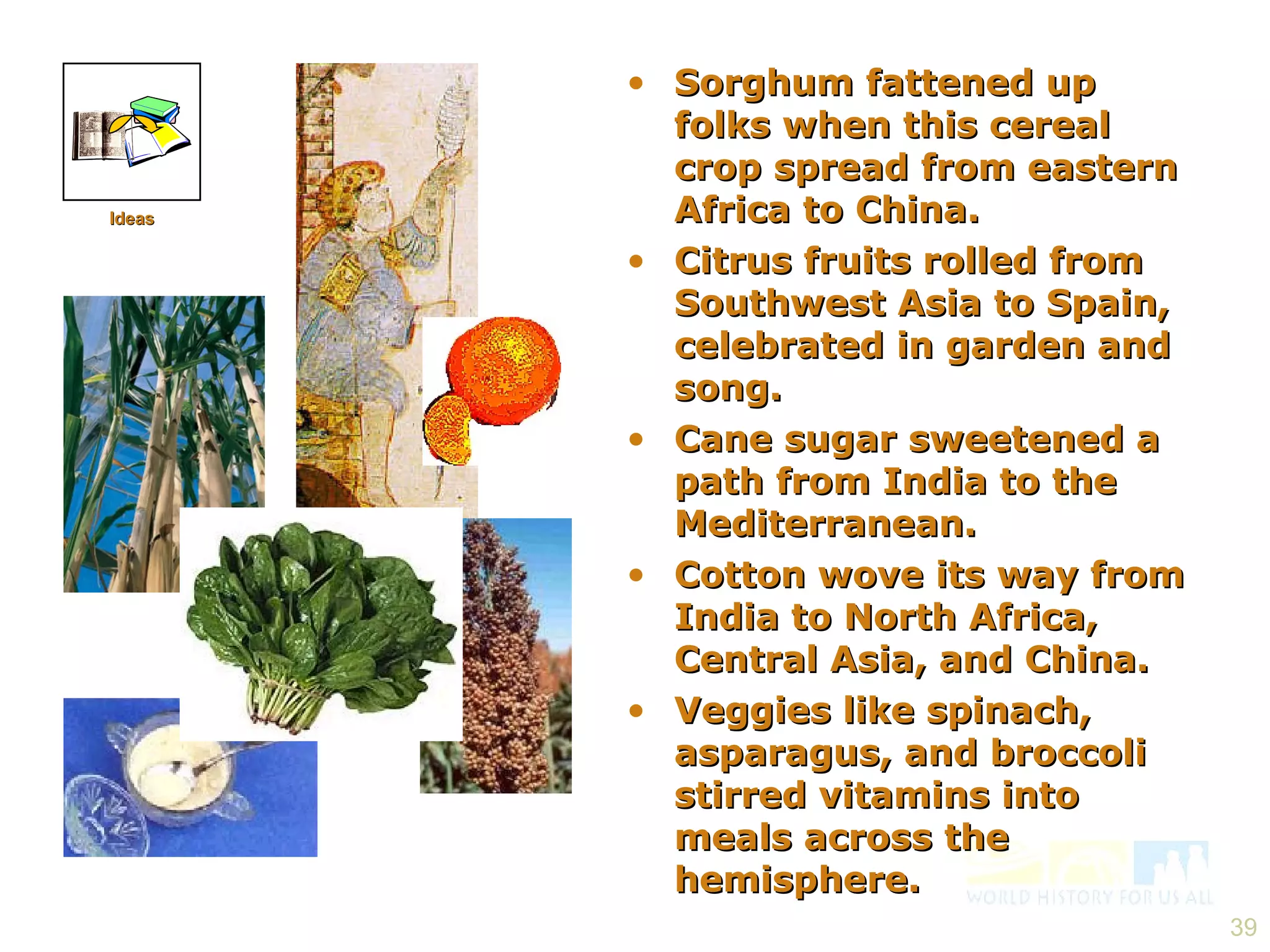During the period from 300-1500 CE (Big Era Five):
- Cultural exchanges across Afroeurasia increased significantly as ideas, technologies, religions, and goods spread more widely through population growth, migrations, expanding trade networks, and large empires.
- While cultural developments also occurred internally in the Americas, the two hemispheres remained largely isolated from one another until 1492 when European voyages first connected Afroeurasia and the Americas on a global scale.









